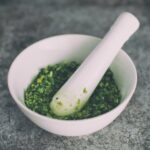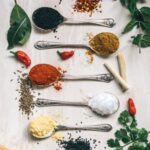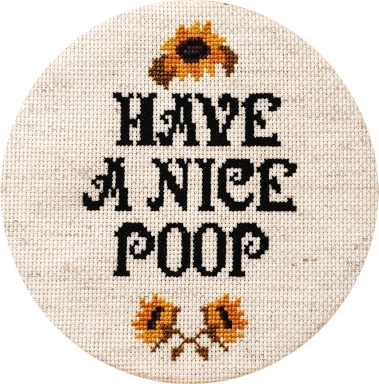Chinese Herbal Remedies for Menstrual Cramps: Natural Relief Backed by Research
Most women know the struggle of menstrual cramps and how they can disrupt daily life. Painkillers offer quick relief, but they often come with side effects and don’t work for everyone. That’s why so many are searching for alternative ways to feel better and regain control each month.
Chinese herbal medicine stands out as a gentle and time-tested option. With roots stretching back centuries, it uses carefully chosen herbs to address both pain and the root causes of discomfort. Recent research and clinical use show that, for many, these natural remedies are more than old wives’ tales—they can help ease cramps and support wellbeing, all without harsh chemicals.
Traditional Chinese Medicine’s Approach to Menstrual Cramps
Traditional Chinese Medicine (TCM) sees menstrual cramps as more than just a monthly nuisance. Instead of chalking it up to “bad luck,” TCM looks for deeper causes in the way energy (Qi) and blood move through the body. When there’s a blockage, deficiency, or imbalance, cramps can show up as a warning sign. By figuring out which type of imbalance is at play, TCM practitioners pick remedies that fit each person—rather than offering a one-size-fits-all fix. This personalized approach is key to the lasting relief many women seek.
 Photo by Yan Krukau
Photo by Yan Krukau
Key Patterns: Understanding the Root Cause
TCM recognizes several main patterns behind menstrual cramps. Each pattern has its own symptoms and treatment approach. If you’ve ever wondered why some remedies work for your friend but not for you, this is why—your patterns could be totally different.
Here are four of the most common patterns TCM practitioners see:
- Blood Stasis: Pain is usually sharp, stabbing, and fixed in one spot. Period blood may be dark or clotty. Stress, past trauma, or long-term Qi stagnation often cause this. Moving the blood and easing blockages are top priorities.
- Cold in the Uterus: Cramping worsens with cold weather or after eating cold foods. Pain feels better with warmth, and blood tends to be thin, dark, or scanty. Exposure to cold environments or consuming too many chilled foods and drinks can cause this pattern. The uterus, in TCM, is like a garden that needs warmth; cold is like a winter frost, stopping things from flowing freely.
- Qi Deficiency: Cramps are generally mild but persistent, with a dragging feeling in the lower abdomen. Fatigue, shortness of breath, or feeling weak are common. Blood may be pale. This pattern often shows up with poor diet, overwork, or stress. The body’s engine simply doesn’t have enough fuel to keep things running smoothly.
- Heat Excess: Pain can be intense, burning, and may come with a heavy flow, bright red blood, or a feeling of heat in the body. You might have irritability, acne, or a thirst for cold drinks. Spicy foods, emotional stress, or hormonal fluctuations can create this “overheating.”
Why Pattern Differentiation Makes All the Difference
Treating everyone the same way just doesn’t work—TCM knows this. Pattern differentiation, or bian zheng, is the process of pinpointing your unique imbalance. This means a TCM herbalist won’t just ask about your period pain. They’ll dive into details like your energy levels, emotional state, temperature preferences, and even your sleep.
By matching herbs to the specific root cause—whether it’s warming an ice-cold uterus or moving stuck blood—TCM can offer better, longer-lasting relief. It’s like finding a key that actually fits your lock.
What to Expect From a TCM Diagnosis
During a visit, a practitioner may:
- Ask about your cycle: timing, color, flow, and symptoms.
- Check your pulse and tongue for clues on your internal balance.
- Consider your emotional health, diet, and cold/heat preferences.
You’ll get a plan targeting your unique pattern, which might include herbal formulas, acupuncture, dietary tips, and lifestyle changes. The goal isn’t just to stop the pain for a month—it’s to retrain your body for smoother, less painful cycles in the long term.
Bottom Line: Individualized, Root-Focused Care
TCM’s strength isn’t just in its herbs, but in its focus on “why” the pain started in the first place. By addressing the whole picture, TCM aims to gently nudge your body back into balance—so your period doesn’t have to run the show.
Key Chinese Herbs and Herbal Formulas for Menstrual Cramp Relief
Chinese herbal medicine approaches menstrual pain from all angles, with herbs chosen according to your specific symptoms and body type. These remedies aren’t just folk wisdom—they’re backed by both centuries of use and a growing pile of research. Here’s a closer look at some of the most effective Chinese herbs and formulas for relief, and how they work.
Angelica Sinensis (Dang Gui): The Queen of Blood Movers
 Photo by Yan Krukau
Photo by Yan Krukau
Dang Gui, often called the “female ginseng,” is famous in Chinese medicine for its ability to regulate, nourish, and move blood. When it comes to periods, Dang Gui is the number one herb for:
- Boosting blood circulation to break up stagnation and ease period pain.
- Replenishing blood after heavy flow, helping with fatigue and weakness.
- Speeding recovery post-menstruation by supporting the body’s natural restorative process.
Think of Dang Gui as a gentle “traffic controller” for your blood: it keeps things moving without causing chaos and ensures your body isn’t running on empty when your cycle is over.
Ginger (Sheng Jiang): Warming Circulation and Reducing Inflammation
Chinese medicine considers ginger a top choice for those who feel relief from warmth or gravitate toward heating pads during their period. Ginger packs a one-two punch:
- Warming effect: It stimulates circulation and drives out cold, making cramps less severe—especially if your pain gets worse in the cold or is relieved by heat.
- Anti-inflammatory power: Modern research shows ginger can reduce period pain as effectively as NSAIDs for many women, but with fewer side effects. Clinical trials highlight that taking ginger at the start of the period (750–2000 mg per day) can shrink the intensity and duration of cramps.
This makes ginger a friendly kitchen remedy and a trusted ingredient in plenty of herbal formulas.
White Peony (Bai Shao) and Sichuan Lovage (Chuan Xiong): Muscle Relaxation and Pain Reduction
These two herbs are often used together in classic formulas to relax and soothe your uterus:
- Bai Shao (White Peony): Known for calming muscle spasms, reducing cramping, and easing irritability—think of it as a “muscle relaxer” pulled from nature.
- Chuan Xiong (Sichuan Lovage): Moves blood and tackles stabbing or fixed menstrual pain head-on, especially when blood stasis is involved.
When blended, Bai Shao and Chuan Xiong address both the “what” (pain) and the “why” (stuck blood and spasms). This combo is the backbone of many TCM formulas for period relief.
Corydalis (Yan Hu Suo): Powerful Analgesic Effects
Corydalis is celebrated in Chinese medicine as one of the strongest natural painkillers available. Recent studies have shown:
- Fast pain relief: Corydalis contains compounds that act on the nervous system, blocking pain signals much like prescription medicine, but with a better side effect profile for most people.
- Reduce inflammation: It lowers inflammation, helping with both acute and chronic cramps.
- Research spotlight: Clinical research supports Corydalis as effective for period pain—sometimes even outperforming over-the-counter painkillers in head-to-head tests.
Its trusted power makes it a go-to choice when pain is intense and keeps coming back.
Common TCM Herbal Formulas for Dysmenorrhea
Rather than relying on single herbs, Chinese medicine often uses multi-herb formulas personalized for each pattern. Here are some of the most common, time-tested blends for menstrual cramps:
- Gui Zhi Fu Ling Wan (Cinnamon Twig and Poria Pill):
- Moves blood, dissolves clots, and reduces pelvic congestion.
- Used for cramps with dark, clotty blood and stabbing pain—also shown helpful in endometriosis.
- Dang-Gui-Shao-Yao-San (Tangkuei and Peony Powder):
- Harmonizes blood, nourishes “yin,” relaxes muscles, and eases emotional stress.
- Ideal for period pain tied to blood deficiency, weakness, or mood swings.
- Wen Jing Tang (Flow Warming Decoction):
- Warms the uterus and drives out cold.
- Used for cramping that gets worse with cold or improves with heat.
- Shao Fu Zhu Yu Tang (Lower Abdomen Stasis-Expelling Decoction):
- Targets pain from blood stasis in the lower belly.
- Relieves stubborn cramps and promotes smoother periods.
Each formula addresses different patterns behind the pain—pattern differentiation lets TCM practitioners create custom prescriptions that fit your exact needs.
In practice, these formulas harness the combined effects of multiple herbs. That synergy is why Chinese medicine continues to help so many people find gentle, long-term relief from menstrual pain.
Topical and Device-Based Chinese Herbal Therapies
Modern takes on Chinese herbal medicine aren’t limited to teas and pills. Today’s period relief tools include topical therapies and wearable devices that bring herbal benefits straight to the source of pain. These methods are popular for their steady, targeted effects and can fit easily into a daily routine. Here’s how herbal-infused belts and external applications make life during your period a bit more comfortable.
Herbal Belt Therapy: Continuous, Targeted Pain Relief
 Photo by Yan Krukau
Photo by Yan Krukau
Herbal belts are wearable wraps packed with a blend of traditional Chinese herbs—think angelica, mugwort, cinnamon, and safflower. When placed around your lower abdomen, these belts slowly release herbal extracts in sync with your natural body heat. It’s a bit like having a portable, gentle moxibustion session wherever you go.
How do they work?
The belts are designed to align with important acupressure points along the lower belly and back. As you wear the belt, active compounds from the herbs enter the skin and underlying tissues. This process supports blood flow, relaxes muscles, and encourages warmth, all while providing steady comfort throughout the day or night.
Backing from clinical research:
- Recent studies show that herbal-infused belts can significantly reduce cramp intensity, minimize lower abdominal swelling, and improve overall period comfort.
- Some belts use up to 59 different herbs—a unique approach that addresses both stagnation and cold (two major causes of cramping in TCM).
- The slow, targeted action of these devices means fewer spikes and dips in relief compared to oral remedies, and lower risk of digestive upset.
If you want a natural, hands-free way to manage period pain, an herbal belt can be a practical and effective option to add to your monthly toolkit.
Herbal Teas and External Applications
Herbal medicine isn’t all internal. There’s a long tradition of using teas, soaks, and compresses to soothe menstrual cramps from the outside in.
Warming Herbal Teas:
- Ginger-brown sugar tea is a classic for warming the womb and easing chills or pain linked to cold. Ginger’s anti-inflammatory action, combined with the quick energy from brown sugar, makes this tea a favorite comfort drink.
- Red date (jujube) tea brings both gentle warmth and stress-reducing properties. Red dates nourish the blood and boost energy, helping with fatigue and recovery after a tough period.
External Herbal Applications: To get direct relief, many women turn to external therapies:
- Warm herbal compresses made from boiled ginger, mugwort, or cinnamon can be placed on the abdomen, delivering heat and natural analgesic effects right where you need it.
- Herbal soaks—foot soaks or sitz baths with herbs like mugwort and Sichuan lovage—boost circulation and relieve tension.
- Pre-made herbal patches offer a mess-free, portable solution. Place these sticky patches on the lower belly for hours of steady warmth and pain relief.
These methods combine old wisdom with modern convenience, giving you simple ways to bring herbal comfort straight to the source of your pain.
In summary:
Topical and device-based therapies in Chinese medicine offer flexible, proven options for tackling menstrual cramps—great for anyone looking for steady relief, fewer side effects, and more control over period pain.
Scientific Evidence and Safety Considerations
Chinese herbal remedies attract interest for period pain relief, but what does the science say about using these herbs—and how safe are they? This section covers the key research findings and practical safety tips, so you can make informed choices about trying Chinese herbal medicine for menstrual cramps.
Clinical Research on Chinese Herbal Interventions for Menstrual Cramps
 Photo by Julia Volk
Photo by Julia Volk
Modern studies are shining a light on how Chinese herbs can help with period cramps. Researchers have put popular formulas through their paces in randomized trials and systematic reviews.
Here’s a quick look at what science has found:
- Formulas like Xuefu Zhuyu Decoction: Recent trials with hundreds of participants show that this formula can cut down both the intensity and duration of cramps. It seems to work by improving blood flow and lowering inflammation.
- Angelica sinensis (Dang Gui), White Peony (Bai Shao), and licorice: These are consistent ingredients in formulas studied for menstrual pain. The studies point to pain relief results that sometimes beat over-the-counter painkillers.
- Siwu Decoction and related formulas: Evidence from several randomized studies and meta-analyses suggests that Siwu-type formulas are not only effective but may also improve overall quality of life for people dealing with regular menstrual pain.
- Ginger and fennel: Trials have shown these herbs can ease menstrual cramps due to their anti-inflammatory and muscle-relaxing effects, sometimes performing about as well as NSAIDs like ibuprofen.
- Topical and device-based therapies: Research into herbal footbaths and wearable herbal-infused belts finds positive results, especially for women looking for natural, drug-free comfort.
Still, a few challenges remain. Many studies use different herbal blends or preparation methods, and some trials are small or short. More large-scale, high-quality studies are on the way, but the research so far supports what TCM practitioners have been saying for years—these herbs, when used right, may offer reliable relief from monthly pain.
Safety, Potential Side Effects, and Consultation Guidelines
Safety is just as important as results. Not all herbal treatments are risk-free, and personal differences mean that what works for one person might not suit another.
Here’s what you need to know about staying safe with Chinese herbal remedies:
Possible Side Effects
- Digestive upset: Some herbs (like ginger) may cause mild heartburn or stomach pain if taken in large amounts.
- Allergic reactions: Though rare, skin rashes or itching can occur, especially in those sensitive to certain plant compounds.
- Interactions: Herbs like Dang Gui and cinnamon can interact with blood thinners, blood pressure meds, or hormone-based treatments.
Quality Matters
- Herbal supplements aren’t always strictly regulated. Potency and purity can vary between brands, so stick with products tested by third-party labs when possible.
- Dosages are key—too much of a good thing (even with natural remedies) can bring unwanted effects.
When to Consult a Practitioner
- A licensed Chinese medicine practitioner can tailor treatment to your exact needs. They consider your full health profile, perform pattern diagnosis, and recommend formulas (and doses) unique to your body and symptoms.
- If you take medications or have chronic health concerns, always check with both your primary physician and a licensed herbalist before starting new herbs.
Practical Guidelines for Using Chinese Herbs
- Start with low doses, especially if you’re new to herbal medicine.
- Give feedback to your practitioner about any changes or side effects.
- Keep an updated list of all herbs and medications you’re taking. Share this with every healthcare provider involved in your care.
Chinese herbal medicine for period pain is generally safe for most people when used correctly. By paying attention to your body’s signals and getting advice from the right experts, you can use these remedies with confidence—knowing you’re taking steps for safer, more comfortable cycles.
Conclusion
Chinese herbal remedies for menstrual cramps show that gentle, tailored care can make a real difference each month. These treatments draw from both tradition and research, supporting relief without relying solely on over-the-counter drugs. Whether through classic formulas, warming teas, or herbal belts, the focus stays on treating your unique needs and restoring comfort.
This approach works best when used with the right guidance and in harmony with your regular healthcare. A trusted TCM practitioner fine-tunes herbal choices for your body, helping you manage pain while supporting your whole well-being.
Your experience matters. Share your story or questions in the comments below—your insight helps others find the path that fits them. Thanks for reading, and here’s to more balanced, pain-free cycles ahead.








